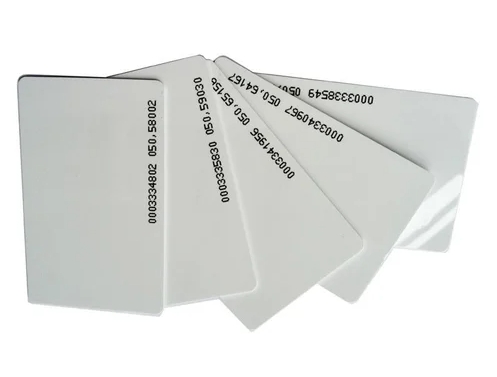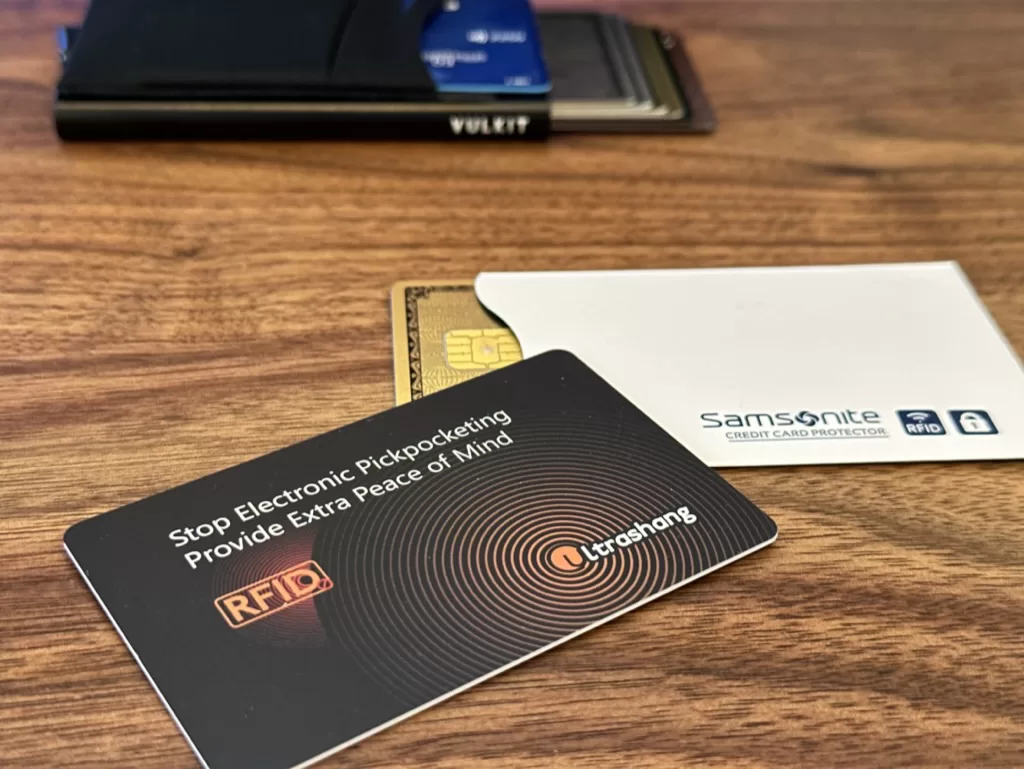
The difference between 125kHz proximity card and RFID card
Proximity and RFID cards are essential for access control, identification, and data management systems. 125kHz proximity cards and RFID cards are widely used in various industries, including corporate offices, educational institutions, medical facilities, and residential areas. However, despite their similarities, there are essential differences between these two types of cards, so users must understand these differences to make an informed decision based on their specific needs. This article will examine the differences between 125 kHz proximity cards and RFID cards.
Basics of 125kHz Proximity Card
125kHz Proximity Cards are a type of contactless smart card that operates at a frequency of 125kHz. Access control applications widely use them to provide a convenient and secure way to grant or restrict access to specific areas. When you bring a 125 kHz proximity card close to a reader, the reader emits a low-frequency electromagnetic field. The card’s antenna receives this field, which powers the microchip and allows it to transmit an identification number back to the reader. The reader then processes this information and grants or denies access based on the card’s credentials.
-jpg.webp)
One of their main advantages is ease of use. The user holds the card close to the reader to gain access without physical contact. This makes proximity cards very convenient in environments requiring fast and seamless access. However, 125kHz proximity cards are generally limited in terms of data storage and security features. They typically only store small amounts of information and cannot store more complex data or encryption methods. As such, they are not as secure as RFID technology in this regard, especially in environments where security is a high priority.
Versatility of RFID Cards
RFID cards represent a broader category of contactless smart cards that operate at various frequencies and offer a wide range of features beyond 125kHz proximity cards. RFID technology is used in numerous applications, including access control, inventory management, asset tracking, and payment systems. Their versatility is their most significant advantage. Unlike 125 kHz proximity cards, RFID cards can operate at various frequencies, including low frequency, high frequency, and ultra-high frequency. Each frequency range has characteristics that make RFID cards suitable for multiple applications.

One significant difference between 125 kHz proximity cards and RFID cards is the amount of data they can store. RFID cards typically have a larger storage capacity, allowing them to hold more information. Security is another advantage of RFID cards, as they offer over 125 kHz proximity cards. Many RFID cards, especially those that operate at higher frequencies, support advanced encryption algorithms and security protocols. This protection ensures that unauthorized access or tampering does not compromise the data stored on the card. At the same time, they also offer an excellent range and speed for data transmission. Depending on the frequency and specific technology, it can be read from several feet away and quickly transmit data.
Security Features of 125 kHz Proximity Cards and RFID Cards
Security is crucial when choosing between 125kHz Proximity cards and RFID cards, especially for applications involving sensitive data or access to restricted areas. While both types of cards offer contactless convenience, they differ significantly in their security features.
125kHz Proximity cards are known for their simplicity and ease of use, but this simplicity comes with a trade-off in security. These cards typically store only a unique identification number and lack advanced encryption or authentication mechanisms. As a result, data transmitted between the card and the reader is often unencrypted and susceptible to interception or cloning.
-jpg.webp)
In contrast, many RFID cards, especially those operating at higher frequencies, such as 13.56 MHz, offer enhanced security features that help protect against these vulnerabilities. For example, RFID cards often use encryption protocols such as the Advanced Encryption Standard (AES) or Triple Data Encryption Standard (3DES) to ensure that the card and reader securely transmit data, preventing easy interception or decoding.
Despite these security advantages, it is essential to note that not all RFID cards are created equal. The level of security provided by RFID cards depends on the specific technology and frequency used, as well as the implementation of security protocols.
Data Storage and Capacity of 125kHz Proximity Card vs. RFID Cards
Data storage and capacity are crucial factors when comparing 125kHz proximity cards to RFID cards, particularly for applications that require more than basic identification. The amount of data stored on these cards directly affects their functionality and the range of applications they can support.
People primarily use 125kHz proximity cards for simple access control and identification purposes, so these cards typically have minimal data storage capacity. They usually store a unique identification number or code, which transmits to a reader when someone presents the card. This minimal data capacity is sufficient for basic access control applications, where the card’s sole function is to identify the cardholder and grant or deny access based on predefined credentials.
The limited storage capacity of 125 kHz proximity cards restricts their use in more complex applications. For example, these cards cannot store additional information such as user profiles, transaction history, or multi-factor authentication data. In contrast, RFID cards, especially those operating at higher frequencies, such as 13.56 MHz (HF RFID), offer significantly greater data storage capacity. Depending on the specific technology and card type, they can store a few kilobytes to several megabytes of data. This expanded capacity enables RFID cards to support a broader range of applications.
Frequency and Range
Frequency and range are vital specifications that differentiate 125 kHz proximity cards from RFID cards. The operating frequency of a card determines its communication range, data transfer speed, and overall performance in various environments. 125kHz proximity cards operate at a low frequency (LF) of 125kHz, one of the most mature frequencies used in contactless card technology.
The low frequency enables these cards to operate reliably in various environments, including those with metal or water interference. However, the operating range of 125 kHz proximity cards is relatively short, typically limited to a few inches. One of the advantages brought by low frequencies is their ability to penetrate non-metallic materials, such as clothing, wallets, or bags. This makes them very convenient for users, as they can keep the card in their pocket or wallet for access without needing to remove it.
The choice of frequency and range is closely related to the specific requirements of your application. For example, if your application involves access control in a secure facility, the short-range, low-frequency operation of a 125kHz proximity card may be an ideal choice. However, if you need to track assets in a large warehouse, the long-range capabilities of a UHF RFID card will be more suitable.
Which card is best for your needs?
125kHz proximity cards are a reliable solution for essential access control and identification. They are easy to use, affordable, and dependable, making them an excellent choice for organizations that need to manage physical access to a building or area without advanced security features or data storage. However, RFID cards may be a better option if your application requires more advanced features, such as secure data storage, multi-factor authentication, or remote communications.


